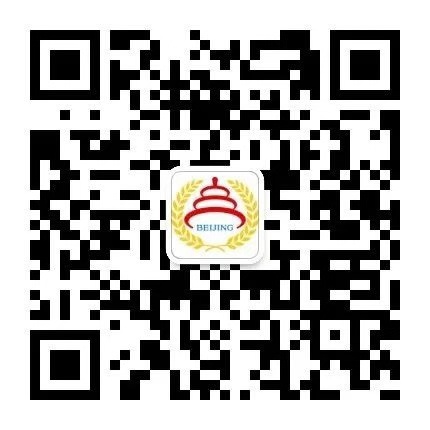共担时代责任 共促亚太发展
——在亚太经合组织第三十一次领导人非正式会议上的讲话
(2024年11月16日,利马)
中华人民共和国主席 习近平
尊敬的博鲁阿尔特总统,
各位同事:
很高兴时隔8年再次来到美丽的“花园之都”利马,同大家共商亚太合作大计。感谢博鲁阿尔特总统和秘鲁政府为这次会议作出的周到安排。
几十年来,亚太经合组织带动亚太地区实现大发展、大繁荣、大融通,助推亚太成为全球经济最具活力板块和主要增长引擎。当前,世界百年变局加速演进,世界经济增长乏力,世界开放指数不断下滑,亚太合作也面临地缘政治、单边主义和保护主义上升等挑战。站在历史的十字路口,亚太各国肩负更大责任。我们要团结协作,勇于担当,全面落实2040年布特拉加亚愿景,推动构建亚太命运共同体,努力开创亚太发展新时代。为此,我愿提出以下建议。
一是构建开放融通的亚太合作格局。我们要坚持多边主义和开放型经济大方向,坚定维护以世界贸易组织为核心的多边贸易体制,充分激活亚太经合组织作为全球经贸规则“孵化器”的作用,着力推进区域经济一体化和互联互通,拆除割裂贸易、投资、技术、服务流通的高墙,维护产业链供应链稳定通畅,促进亚太和世界经济循环。建设亚太自由贸易区是区域经济一体化的宏伟愿景,关乎亚太长远发展繁荣。10年前,亚太经合组织北京会议作出启动亚太自由贸易区进程的历史性决定。今天,我们将通过亚太自贸区建设新的指导文件,相信这将为推动亚太开放型经济发展注入新动力。
开放是中国式现代化的鲜明标识。中国坚持以开放促改革,主动对接国际高标准经贸规则,积极扩大自主开放,将推动电信、互联网、教育、文化、医疗等领域有序扩大开放。中方坚持高质量实施《区域全面经济伙伴关系协定》,积极推动加入《全面与进步跨太平洋伙伴关系协定》和《数字经济伙伴关系协定》进程,签署中国-秘鲁自由贸易协定升级议定书,实质性结束中国-东盟自由贸易区3.0版升级谈判,愿同有关各方探索商谈数字和绿色领域贸易协定,持续扩大面向全球的高标准自由贸易区网络。
二是培育绿色创新的亚太增长动能。我们要牢牢抓住新一轮科技革命和产业变革机遇,在人工智能、量子信息、生命健康等前沿领域加强交流合作,营造开放、公平、公正、非歧视的创新生态,推动亚太地区实现生产力跃升。要坚持生态优先、节约集约、绿色低碳发展,推进经济社会发展全面绿色转型,建设清洁美丽的亚太。要着力推动数字化绿色化协同转型发展,塑造亚太发展新动能新优势。
中国正在因地制宜发展新质生产力,深化同各方绿色创新合作。中方将发布《全球数据跨境流动合作倡议》,愿同各方深化合作,共同促进高效、便利、安全的数据跨境流动。中方在亚太经合组织提出贸易单证数字化、绿色供应链能力建设、人工智能交流对话、粮食产业数字化等倡议,为亚太高质量发展贡献力量。
三是树牢普惠包容的亚太发展理念。我们要用好亚太经合组织平台,加强经济技术合作,加大对发展中经济体和弱势群体的支持,共同做大并分好经济发展“蛋糕”,让更多经济体、更多民众共享发展成果。今年,秘鲁积极推动非正规经济向正规和全球经济转型合作,同中国以人为本、促进社会公平正义、增进人民福祉的发展理念高度契合,中方对此表示欢迎。中方将在亚太经合组织推进提高居民收入、促进中小企业集群式发展等倡议,助力亚太经济普惠包容发展。
中国将担任亚太经合组织2026年东道主,期待同各方一道深化亚太合作,造福亚太人民。
各位同事!
改革开放是中国和世界共同发展进步的历史进程。几个月前,中国共产党二十届三中全会对进一步全面深化改革、推进中国式现代化作出系统部署。全会提出300多项重要改革举措,就构建高水平社会主义市场经济体制、推动经济高质量发展、扩大高水平对外开放、提高人民生活品质、建设美丽中国等各领域作出系统布局。中国发展将为亚太和世界发展提供更多新机遇。
中国古人说,“己欲立而立人,己欲达而达人”。拉美也有句谚语,“唯有益天下,方可惠本国”。中方欢迎各方继续搭乘中国发展快车,同中国经济共同发展,为实现和平发展、互利合作、共同繁荣的世界各国现代化共同努力。
谢谢大家。
Shouldering Responsibility to Our Times And Jointly Promoting Asia-Pacific Development
Remarks by H.E. Xi Jinping
President of the People’s Republic of China
At the 31st APEC Economic Leaders’ Meeting
Lima, November 16, 2024
Your Excellency President Dina Boluarte,
Colleagues,
It is my great pleasure to visit the beautiful garden city of Lima again after eight years and join you in discussing Asia-Pacific cooperation. I wish to thank President Boluarte and the Peruvian government for the excellent organization of this meeting.
Over the decades, APEC has been instrumental in leading Asia and the Pacific to great success in development, prosperity and connectivity, making the region the most dynamic economy and primary engine of global economic growth. The world today is gripped by accelerating transformation unseen in a century as well as anemic growth. The World Openness Index has been on the decline. Asia-Pacific cooperation is confronted with challenges such as rising tendencies of geopolitics, unilateralism and protectionism. At this historic crossroads, we Asia-Pacific countries carry greater responsibilities on our shoulders. We must act in solidarity and cooperation to meet the challenges, fully deliver on the Putrajaya Vision 2040, build an Asia-Pacific community with a shared future, and start a new era in Asia-Pacific development. To this end, I wish to propose the following.
First, we need to build an open and interconnected paradigm for Asia-Pacific cooperation. We should stay committed to multilateralism and an open economy, firmly uphold the multilateral trading system with the World Trade Organization at its core, fully reactivate APEC’s role as an incubator of global economic and trade rules, and advance regional economic integration and connectivity. We should tear down the walls impeding the flow of trade, investment, technology and services, uphold stable and smooth industrial and supply chains, and promote economic circulation in the region and the world. A Free Trade Area of the Asia-Pacific (FTAAP) is an ambitious vision for regional economic integration, and is critical for long-term development and prosperity of our region. Ten years ago, a historic decision to kick off the FTAAP process was taken at the APEC Economic Leaders’ Meeting in Beijing. Today, we will adopt a new document to guide this process. I believe that this will give new impetus to our efforts toward an open Asia-Pacific economy.
Opening up is a distinct hallmark of Chinese modernization. China always promotes reform through opening up. We voluntarily subscribe to high-standard international economic and trade rules, adopt proactive measures for further opening up, and take systematic steps to further open the telecom, Internet, education, culture, medical service and other sectors. We continue to implement the Regional Comprehensive Economic Partnership (RCEP) against high standards. We are also working actively to join the Comprehensive and Progressive Agreement for Trans-Pacific Partnership (CPTPP) and the Digital Economy Partnership Agreement (DEPA). We have just signed a protocol to upgrade the free trade agreement with Peru, and have substantially concluded negotiations with ASEAN to upgrade to free trade area 3.0. Together with the relevant parties, we will seek to discuss trade agreements in digital and green areas, and steadily expand the globally-oriented network of high-standard free trade areas.
Second, we need to make green innovation a catalyst for the Asia-Pacific. We need to firmly seize the opportunities presented by the new round of sci-tech revolution and industrial transformation, and strengthen exchanges and cooperation in artificial intelligence (AI), quantum information, life and health, and other frontier areas. We need to foster an open, fair, just and nondiscriminatory ecosystem for innovation, and promote a leapfrog development of productive forces across our region. To build a clean and beautiful Asia-Pacific, we should prioritize ecological protection, promote resources conservation and their efficient use as well as green and low-carbon development, and engineer an all-round green transition in economic and social development. We need to push forward coordinated digital and green transformation and development to create new momentum and new drivers for Asia-Pacific development.
China is developing new quality productive forces in light of actual conditions and deepening cooperation with interested parties on green innovation. China will launch a Global Cross-Border Data Flow Cooperation Initiative, and seek deeper cooperation with other parties to promote efficient, convenient and secure cross-border data flows. China has put forward initiatives in the APEC framework concerning, among others, the application of digital bill of lading, capacity building on green supply chains, exchanges and dialogue on approaches to AI, and the digitalization of food supply chains, with a view to contributing to high-quality development of the Asia-Pacific.
Third, we need to uphold a universally beneficial and inclusive vision for Asia-Pacific development. We should make good use of the APEC platform to strengthen economic and technical cooperation. We should increase support for developing economies and disadvantaged groups, and work together to grow the pie and distribute it equitably to allow more economies and people to benefit from development. This year, Peru has been actively promoting cooperation on the transition from the informal economy to the formal and global economy. China welcomes this effort which dovetails with our development philosophy of putting people first, promoting social fairness and justice and improving the people’s well-being. China will advance initiatives through the APEC platform on increasing residents’ income and promoting the industrial cluster development of small- and medium-sized enterprises, for the purpose of bringing about universally beneficial and inclusive development of Asia-Pacific economies.
China will host APEC 2026. We look forward to working with all parties to deepen Asia-Pacific cooperation to the benefit of the peoples in the region.
Colleagues,
Reform and opening up is a historic process in which China and the world achieve development and progress together. A few months ago, the 20th Central Committee of the Communist Party of China, at its third plenum, laid out systematic plans for further deepening reform across the board to advance Chinese modernization. More than 300 consequential reform measures were unveiled pertaining to building a high-standard socialist market economy, advancing high-quality economic development, promoting high-standard opening up, improving the people’s quality of life, and building a beautiful country. China’s further development will provide new opportunities for the Asia-Pacific region and the world at large.
An ancient Chinese sage observed, “A man of virtue, while establishing himself and pursuing success, also works to help others establish themselves and succeed.” There is a similar saying in Latin America which goes, “The only way to be profitably national is to be generously universal.” China welcomes all parties to continue riding the “express train” of its development and grow together with the Chinese economy so that we can all contribute to the modernization of all countries featuring peaceful development, mutually beneficial cooperation and common prosperity.
Thank you.
Shouldering Responsibility to Our Times And Jointly Promoting Asia-Pacific Development









